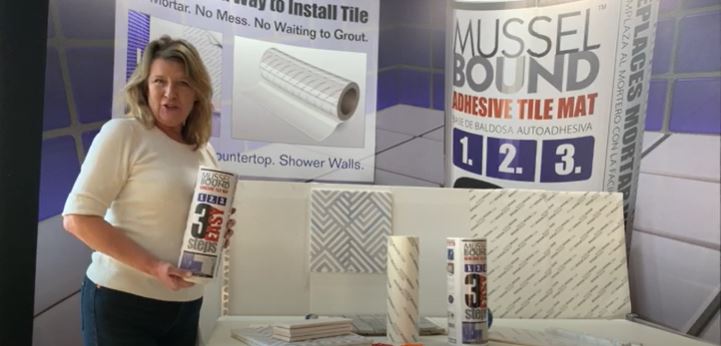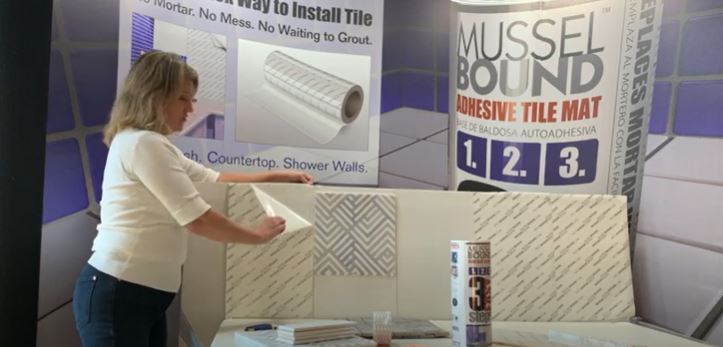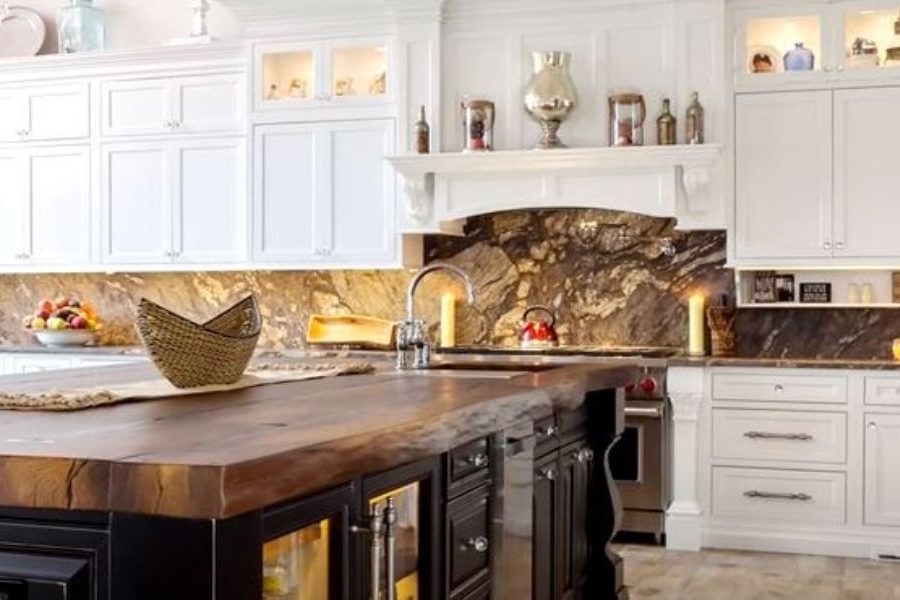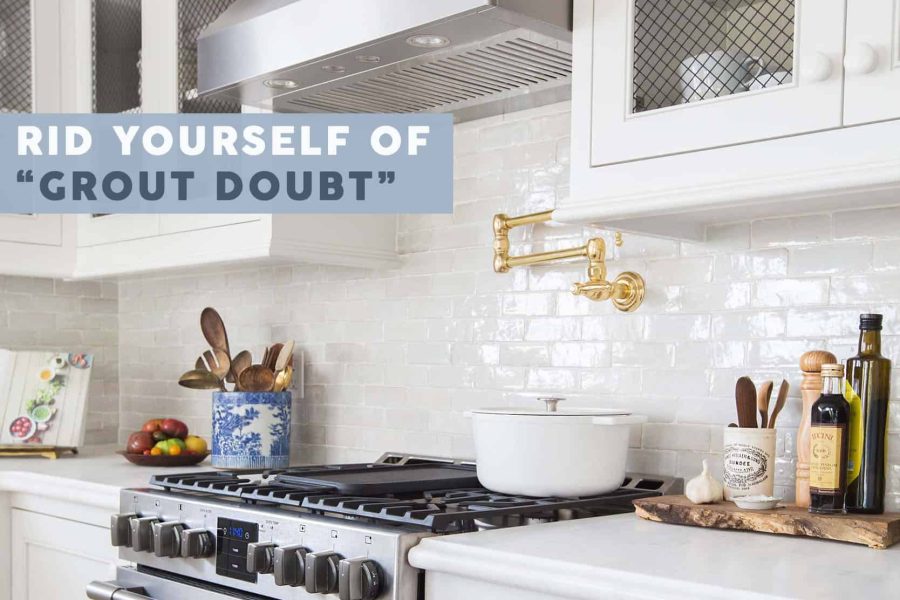Choosing suitable grout can make all the difference when creating a stunning kitchen backsplash. A well-selected white grout for kitchen backsplash enhances the overall aesthetics and provides durability and functionality. This article will explore the world of white grout options, their unique features, advantages, and how to make the best white grout for kitchen backsplash. Whether you’re a seasoned interior designer or a homeowner embarking on a DIY project, this comprehensive guide covers you.
SPECIFICATIONS
Manufacturer: MusselBound Item Weight: 1.3 Pounds
Package Dimensions: 12.25 x 4.65 x 4.65 inches
Material: Plastic
Style: Compact
TODAY’S BEST DEALS
 REASONS TO BUY
REASONS TO BUY
- Aesthetically pleasing, it complements a wide range of tile colours and styles.
- Brightens up the kitchen space, making it appear larger and more inviting.
- Easy to find and readily available at most home improvement stores.
- Stain-resistant varieties are available, keeping the grout looking clean and fresh.
- Versatile and suitable for both traditional and modern kitchen designs.
REASONS TO AVOID
- Prone to discolouration over time, especially in high-traffic areas.
- Regular maintenance is required to prevent stains and keep it looking pristine.
- Not as forgiving for DIY installation, it may require precise application to ensure a smooth appearance.
- Some groups may require sealing to enhance stain resistance, adding extra steps to the installation process.
- If not cleaned properly, white grout can appear dull and dirty, affecting the overall kitchen appearance.
Why white grout for a kitchen backsplash?
White grout for kitchen backsplash has long been a favourite choice and with good reason. Its neutral tone complements a wide range of tile colours and patterns, making it a versatile option that fits any design scheme. Additionally, white grout brightens the space, giving the kitchen a clean and fresh appearance. Its ability to mask dirt and stains also adds to its popularity, ensuring your kitchen remains beautiful and pristine with minimal effort.
Types of White Grout
- Sanded White Grout
Sanded white grout is excellent for backsplashes featuring larger tiles with more comprehensive grout lines. The sand particles in this type of grout help reinforce its strength, making it ideal for high-traffic areas like the kitchen. We recommend sanded white grout for its exceptional durability and resistance to cracking, which is crucial for maintaining the integrity of your backsplash over time.
- Unsanded White Grout
For backsplash designs using smaller tiles with narrower grout lines, unsanded white grout is the way to go. Unlike its sanded counterpart, this type of grout is smoother and easier to work with in tight spaces. It provides a seamless and polished look, perfect for achieving a sleek and modern kitchen aesthetic.
- Epoxy White Grout
If you seek maximum stain resistance and water repellency, epoxy white grout is your best bet. This high-performance grout is exceptionally durable and moisture-resistant, making it an ideal option for kitchen backsplashes, especially those near sinks and stovetops. Remember that epoxy grout can be a bit more challenging due to its quick-drying nature, so we recommend it for experienced DIY enthusiasts or professional installers.
Factors to Consider When Choosing white grout for kitchen backsplash
- Tile Size and Grout Line Width
As mentioned earlier, the size of your tiles and the width of the grout lines play a significant role in determining the type of white grout that will suit your white grout for kitchen backsplash. Consider the manufacturer’s recommendations for grout line width, which can impact your installation’s performance and visual appeal.
- Colour Consistency
When choosing white grout, it’s essential to ensure colour consistency throughout the installation. Variations in grout colour can be distracting and diminish the overall look of your backsplash. We recommend using grout from the same batch and following the manufacturer’s instructions to achieve a uniform and seamless finish.
- Stain Resistance
Given the kitchen’s propensity for spills and splatters, opting for a white grout with excellent stain resistance is crucial. As mentioned earlier, epoxy white grout for kitchen backsplash excels in this aspect, but other types of grout can also offer varying degrees of stain resistance. Always check the product specifications to ensure it meets your requirements.
- Ease of Maintenance
Nobody wants to spend hours scrubbing grout to keep it looking pristine. Consider how much time and effort you’ll invest in maintaining your kitchen backsplash, and choose a white grout that aligns with your maintenance preferences.
Installation Tips for white grout for kitchen backsplash
Now that you’ve selected the perfect white grout for your kitchen backsplash, it’s time to ensure a flawless installation. Follow these tips to achieve professional-looking results:
- Proper Mixing
Whether you’re using pre-mixed grout or mixing it yourself, we cannot emphasize enough the importance of following the manufacturer’s guidelines for water-to-grout ratio and mixing time. Consistency in mixing will ensure optimal performance and adherence.
- Test Patch
Before committing to grouting the entire backsplash, we advise doing a test patch to observe how the grout dries and interacts with your tiles. This will help you make necessary adjustments before proceeding with the complete installation.
- Work in Sections
Work in small sections to prevent the grout from drying too quickly, especially if you’re using epoxy grout. This will give you enough time to clean excess grout before it sets, ensuring a neat finish.
- Sealing the Grout
After the grout has cured, consider applying a high-quality sealer to enhance its stain resistance and protect it from moisture. Regular resealing will prolong the life of your grout and maintain its pristine appearance.
Conclusion
Choosing the best white grout for your kitchen backsplash can significantly impact your space’s overall look and durability. By considering factors like tile size, grout line width, and maintenance requirements, you can make an informed choice that ensures your kitchen remains beautiful and functional for years to come.
Remember, a successful kitchen backsplash installation relies on high-quality white grout and proper installation techniques. Follow the tips in this guide to achieve professional-looking results that will leave your guests in awe.
Now that we have explored the world of white grout and its applications in kitchen backsplashes, we hope we have equipped you with the knowledge to make the best decision for your unique space.
FAQs about the Best White Grout for Kitchen Backsplash
Q: Can I use white grout with dark-colored tiles?
A: Yes, white grout can create a stunning contrast with dark-colored tiles, enhancing the overall look of your kitchen backsplash.
Q: Is sanded grout better than unsanded grout for my backsplash?
A: It depends on the width of your grout lines. Sanded grout is ideal for wider gaps, while unsanded grout is better suited for narrower ones.
Q: How can I prevent stains on my white grout?
A: Applying a high-quality grout sealer can help protect your white grout from stains caused by spills and splatters.
Q: Can I install a white grout backsplash on my own?
A: Absolutely! Installing a white grout backsplash can be a rewarding DIY project with proper preparation and the right tools.
Q: How often should I reseal the grout in my kitchen backsplash?
A: It’s recommended to reseal the grout every 1-2 years to maintain its stain resistance and longevity.
Q: Are there any eco-friendly white grout options available?
A: Some manufacturers offer eco-friendly grouts free from harmful chemicals, making them safe for the environment and your home.














